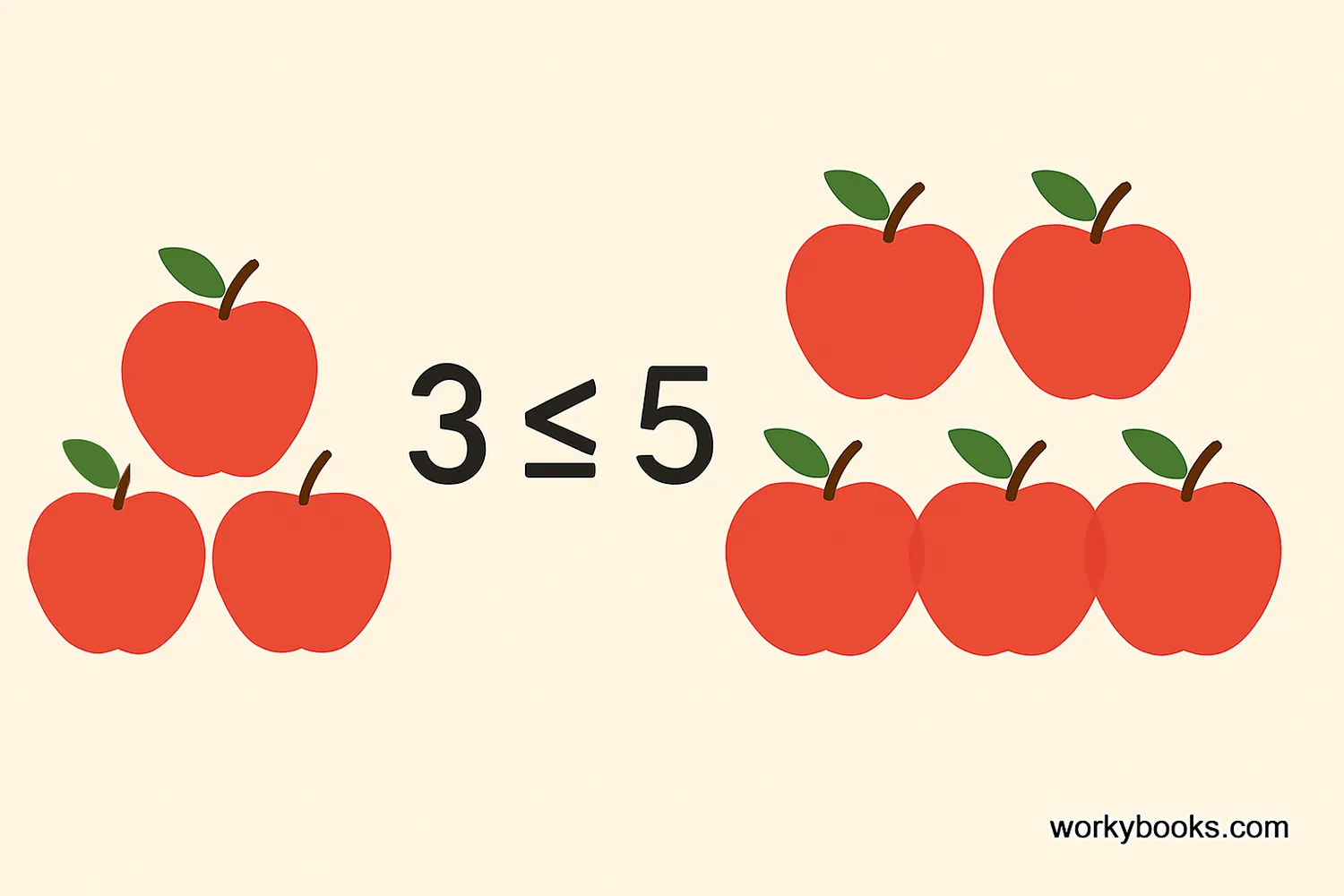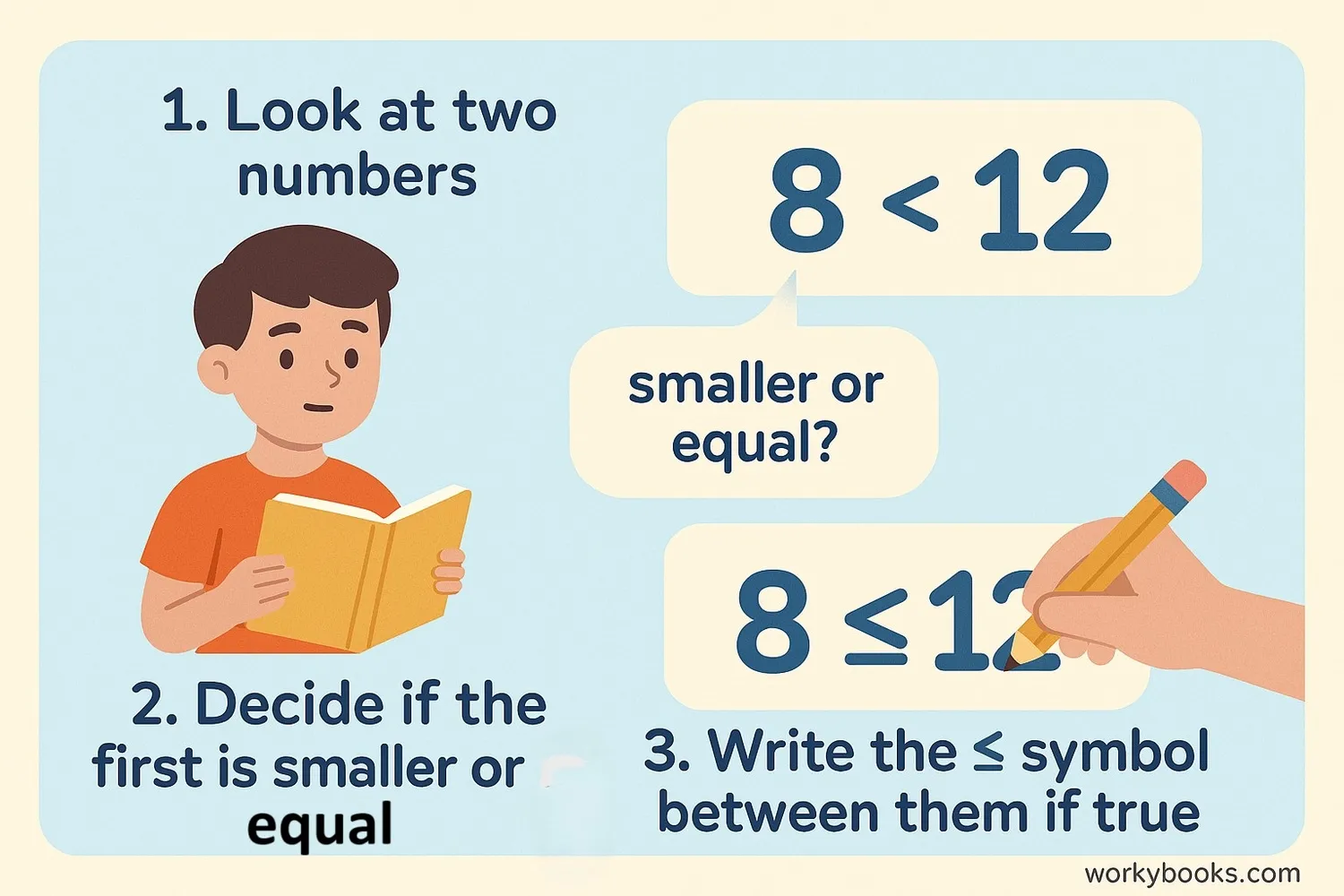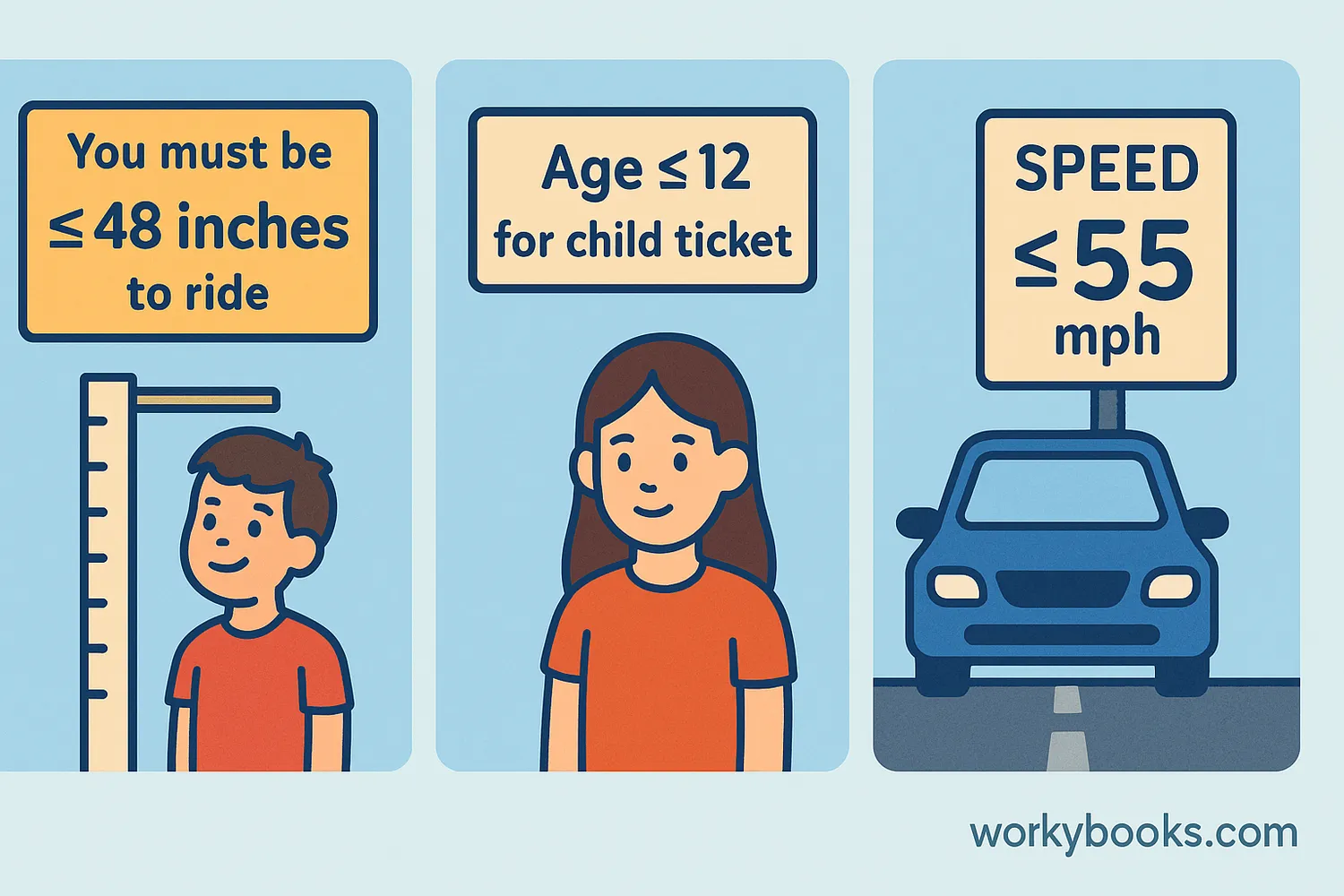Less Than or Equal To (≤) - Definition, Examples, Quiz, FAQ, Trivia
Learn about comparison symbols in math with easy explanations and practice activities
What Does "Less Than or Equal To" Mean?

"Less than or equal to" is a math concept we use to compare numbers or amounts. When we say one number is "less than or equal to" another number, it means:
Either: The first number is smaller than the second number
Or: The first number is exactly the same as the second number
For example, if you have 3 apples and your friend has 5 apples, we can say "3 is less than or equal to 5" because 3 is smaller than 5. If you both had 4 apples, we could also say "4 is less than or equal to 4" because they are equal.
This concept helps us understand relationships between numbers and solve math problems.
Key Concept
"Less than or equal to" means a number is either smaller than another number or exactly the same as that number.
The Less Than or Equal To Symbol
In math, we use special symbols to show comparisons quickly. The symbol for "less than or equal to" looks like this:
Math Symbol
This symbol means "less than or equal to"
The less than sign (<) - which shows that one number is smaller than another
The equal sign (=) - which shows that two numbers are exactly the same
When we put these together, we get ≤ which means "less than OR equal to."
You can remember this symbol by thinking of it as a hungry alligator that wants to eat the bigger number, but it's also happy if the numbers are equal!
Remember
The small point of the ≤ symbol always faces the smaller number, and the open side faces the larger number.
How to Use Less Than or Equal To

Using the less than or equal to symbol is easy once you know how to compare numbers. Here's how to do it:
Step 1: Look at the two numbers you want to compare
Step 2: Ask yourself: "Is the first number smaller than the second number?"
Step 3: If not, ask: "Are the two numbers equal?"
Step 4: If the answer to either question is YES, then you can use the ≤ symbol
Let's practice with an example:
Compare 4 and 7
Is 4 smaller than 7? → Yes
So we can write: 4 ≤ 7
Compare 5 and 5
Is 5 smaller than 5? → No
Are they equal? → Yes
So we can write: 5 ≤ 5
Compare 8 and 3
Is 8 smaller than 3? → No
Are they equal? → No
So we cannot use ≤ (we would use > instead)
Practice Tip
When comparing numbers, always read from left to right. The number on the left is being compared to the number on the right.
Real-World Examples

We use "less than or equal to" in many real-life situations. Here are some examples:
Example 1: Amusement park rides often have height restrictions
"You must be ≤ 48 inches tall to ride"
This means your height must be 48 inches or less
Example 2: Movie theaters have age-based ticket prices
"Child ticket: Age ≤ 12"
This means children 12 years old or younger get the child price
Example 3: Speed limits on roads
"Speed ≤ 55 mph"
This means you should drive 55 miles per hour or slower
Example 4: Baking recipes
"Bake at 350°F for ≤ 30 minutes"
This means bake for 30 minutes or less
Example 5: Store discounts
"Discount applies to orders ≤ $100"
This means orders of $100 or less get the discount
Number Comparison Examples
| Comparison | Is it true? | Explanation |
|---|---|---|
| 5 ≤ 8 | Yes | 5 is less than 8 |
| 7 ≤ 7 | Yes | 7 is equal to 7 |
| 4 ≤ 3 | No | 4 is greater than 3 |
| 10 ≤ 15 | Yes | 10 is less than 15 |
| 12 ≤ 12 | Yes | 12 is equal to 12 |
| 9 ≤ 6 | No | 9 is greater than 6 |
Real-World Connection
Look for ≤ symbols in your daily life - you might find them in stores, on signs, or in instructions!
Practice Quiz
Test your understanding with this 5-question quiz. Choose the correct answer for each question.
Frequently Asked Questions
Here are answers to common questions about less than or equal to:
Math Trivia
Discover interesting facts about math symbols and comparisons:
Origin of Inequality Symbols
The symbols for inequalities (<, >, ≤, ≥) were first introduced by the British mathematician Thomas Harriot in the 1630s. However, they didn't become widely used until the 1700s.
Symbol Variations
In some countries and computer programming languages, the less than or equal to symbol is written as <= instead of ≤. Both mean the same thing, but ≤ is the proper mathematical symbol.
Different Languages
While the math symbols are the same worldwide, different languages have different words for "less than or equal to." In Spanish it's "menor o igual que," in French it's "inférieur ou égal à," and in German it's "kleiner oder gleich."
Computer Science Use
In computer programming, the ≤ symbol is very important. It's used in conditional statements like "if age ≤ 12 then price = child" to make decisions in programs and apps.


